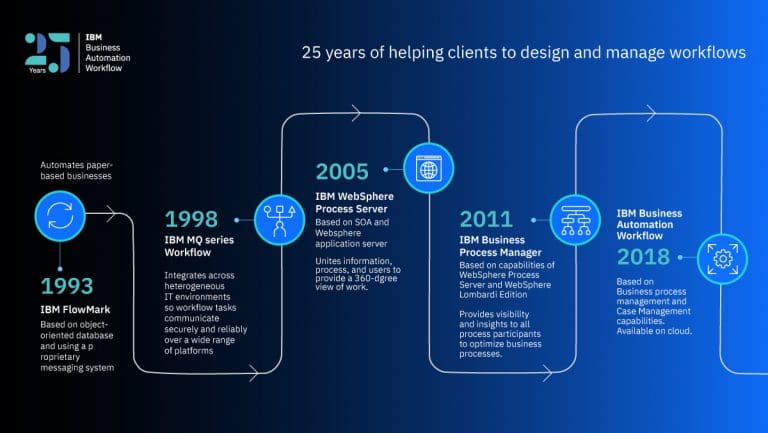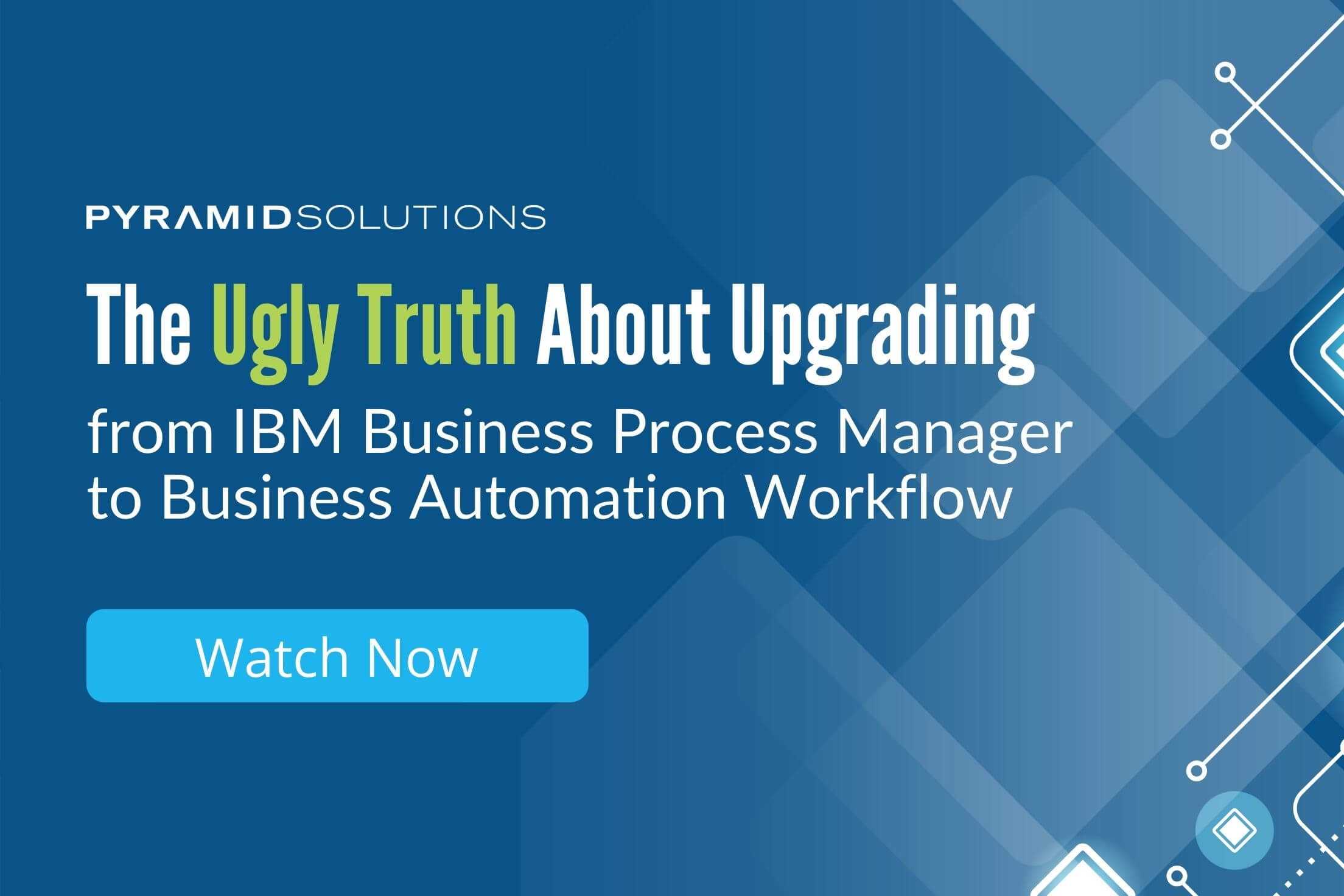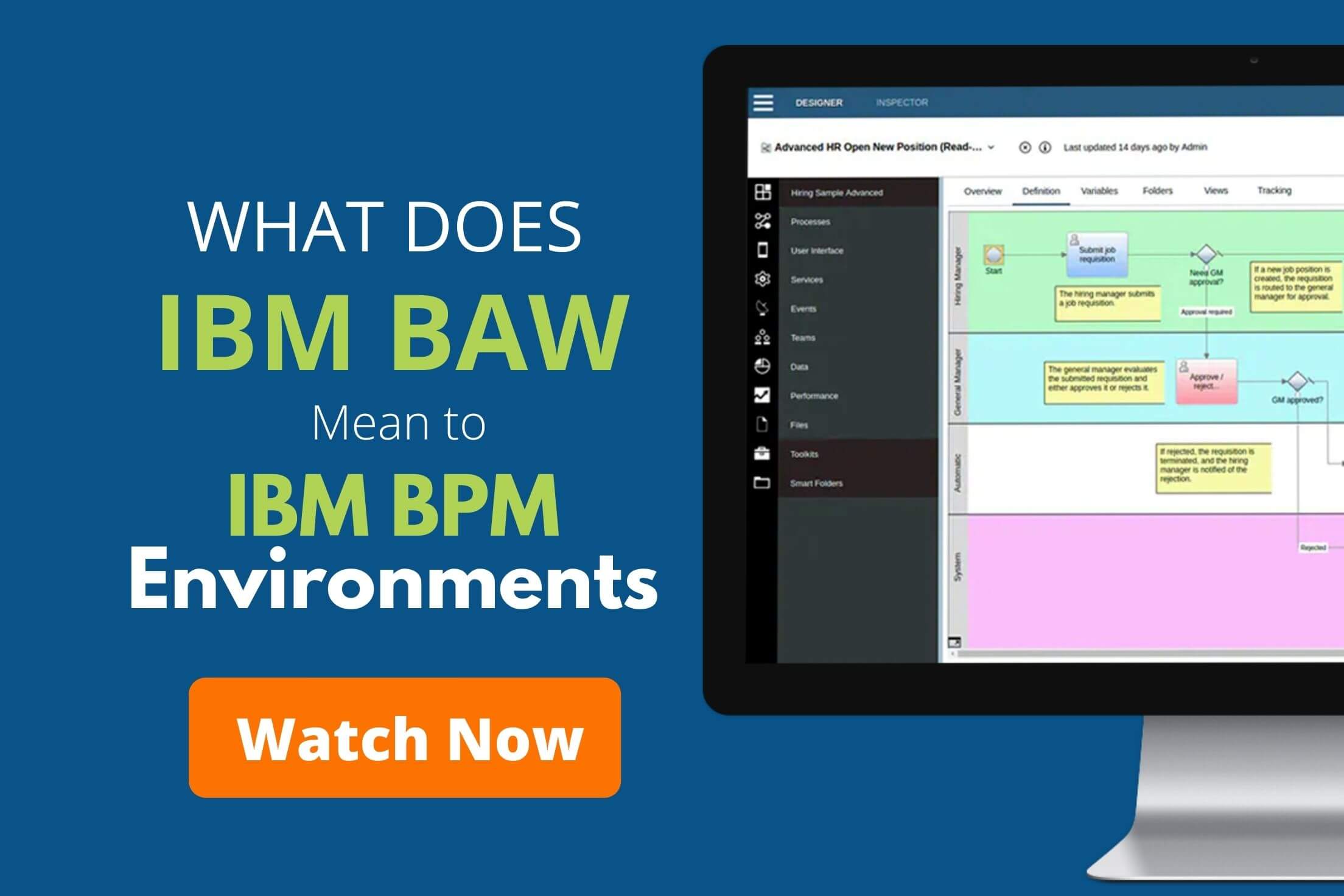8 Things You Need to Know About IBM’s Business Automation Workflow

“What is IBM’s Business Automation Workflow?” “How will this affect our processes?” “We just launched BPM– why should we upgrade? Doesn’t it do everything IBM Case Manager already does?” “What’s new?” “Why does it even matter?” “Why did IBM combine BPM and Case Manager in the first place?”
These are the exact questions our clients ask us on a weekly basis since the release of IBM Business Automation Workflow (BAW).

First, let’s start with what it is: Business Automation Workflow (BAW) is a combination of IBM Case Manager (ICM) and IBM Business Process Manager (BPM). This means that IBM has brought case management and BPM features into a single tool: BAW. So, what do you need to know to begin taking advantage of BAW’s new features to create more efficient workflows?
1. Process Designer is here to stay.
With BAW, those who are accustomed to using the old Java Applet-based P8 Process Designer will now be able to start building workflows using IBM BPM Process Designer, a web-based workflow design tool. It offers a more modern workflow-building interface with increased flexibility, features and expandability. Additionally, it’s BPMN-compliant, meaning users can build a workflow in different tools, like Blueworks Live or Visio, and import it!
2. Business Automation Workflow is not a rip-and-replace.
BAW is an evolution rather than a revolution. The P8 Process Engine that you’re used to isn’t going away so everything will continue to work. Everything you’re familiar with and have deployed will continue to function as it has in the past without change. The bulk of your work will come from learning new IBM terminology within the Case Builder and getting comfortable building workflows using the BAW Process Designer (as opposed to P8 Process Designer) with new features. Interested to know what an upgrade to IBM Business Automation Workflow will look like? Be sure to get a free assessment. To learn more, see the end of the article
3. IBM Content Navigator will continue to be the interface.
Breathe easy knowing that any customizations and effort in training and learning to use Content Navigator are still valid. This experience will also make it easier to quickly adapt to other tools in the DBA platform.
Do note, however, IBM has changed the name of “IBM Content Navigator” to “IBM Navigator.” It might be confusing for a while, but if you see IBM referencing Navigator, they are referring to your “Content Navigator.”
4. “Tasks” is now “Activities.”
Remember Tasks? Well, now they are being called Activities. Using the term Activities is more in line with the industry’s term for process fragments, so this is essentially a good change. Most of these changes are cosmetic, but learning and understanding the language that will be used going forward with the workflow pillar will be the first step in the integration of the formerly separate products. Consistency in the terminology is important in the beginning stages of the implementation so you can keep up with discussions around BAW.
5. IBM is still building out user interfaces for Business Automation Workflow.
Because IBM is still building out additional user interfaces for BAW and integrating them into Navigator, we recommend you start to familiarize yourself with IBM’s BPM Process Designer. Focus on the backend process instead of the user interface, since it will be changing in the future. That tool will continue to be used for now.
Note – that the BPM Process Designer is an entirely new tool to build workflows, but it does not significantly change the way in which you design workflows. However, if you are still using P8 Process Designer and know the interface and all the little quirks like the back of your hand, you will have to relearn those in the BPM Process Designer.
Although this isn’t a huge upgrade implementation-wise, it does hold significant changes in the way we define workflow and a lot of the common terminology in IBM tools. Prepare for these changes and you’ll be ready to hit the ground running with this enhanced workflow engine.
Pro-Tip
The best way to safely implement your first BPM workflow is to pick an activity within Case Manager that doesn’t require user steps such as sending data to a system of record. Use IBM BPM Process Designer to build that workflow. Pick processes with these characteristics that require work only on the backend because the user interface will not be fully integrated until end of 2019. Note that legacy P8 processes can live side-by-side with BPM processes.
6. Migration to IBM BAW must be done carefully.
Whether you’re upgrading from IBM Case Manager, Business Process Management or another business process software, migration is no easy feat. The overall migration process is lengthy and tedious involving multiple steps that must be done carefully in order.
Within the actual migration procedure itself, you must choose between two different methods: migrating artifacts only and migrating artifacts and then business data and applications, which depends on your current system configuration. Then, there are other things to keep in mind such as pre-migration best practices which include:
- Deleting your unneeded tasks from process database.
- Deleting snapshots and their dependencies if you no longer need them
- Removing data that you no longer need from the Performance Data Warehouse database.
Migration must be done properly with all steps completed. One missed or improper step could lead to interruption and setback your productivity and cost. For a proper in-depth migration, we offer migration services to ensure a zero risk migration, so there’s no worry about hiccups during your move to BAW.
7. IBM Workflow Center is your go-to for case solutions.
While IBM’s Case Builder page is still available, IBM BAW offers a Workflow Center for your case solutions. The Workflow Center comes with new capabilities including:
- Different view modes: There are two view modes available with IBM Workflow Center — basic and advanced, which will show different options according to what is chosen.
- Navigation: The Workflow Center offers numerous ways to browse case solutions and process applications through a slide out menu.
- Workflow Center and Classic Case Builder windows: You can easily go back and forth between the workflow center and case builder menus by just clicking the matrix icon (9 by 9 dots).
Note: Case solutions that haven’t been upgraded to the Workflow Center will be available on the Case Builder page.
8. There is plenty of support available for IBM BAW.
You don’t have to take on IBM BAW alone. We can assist you through any stage when implementing IBM BAW, from a complete assessment of implementing IBM BAW to installation and deployment.
We also offer training to help you learn the ropes of the software, or alternatively, you offer an award-winning support team who can be there to assist you at any time when an issue arises.
Interested in a free IBM Automation Workflow assessment? Want to know more about how IBM BAW affects existing IBM BPM environments? Visit the pages below:


